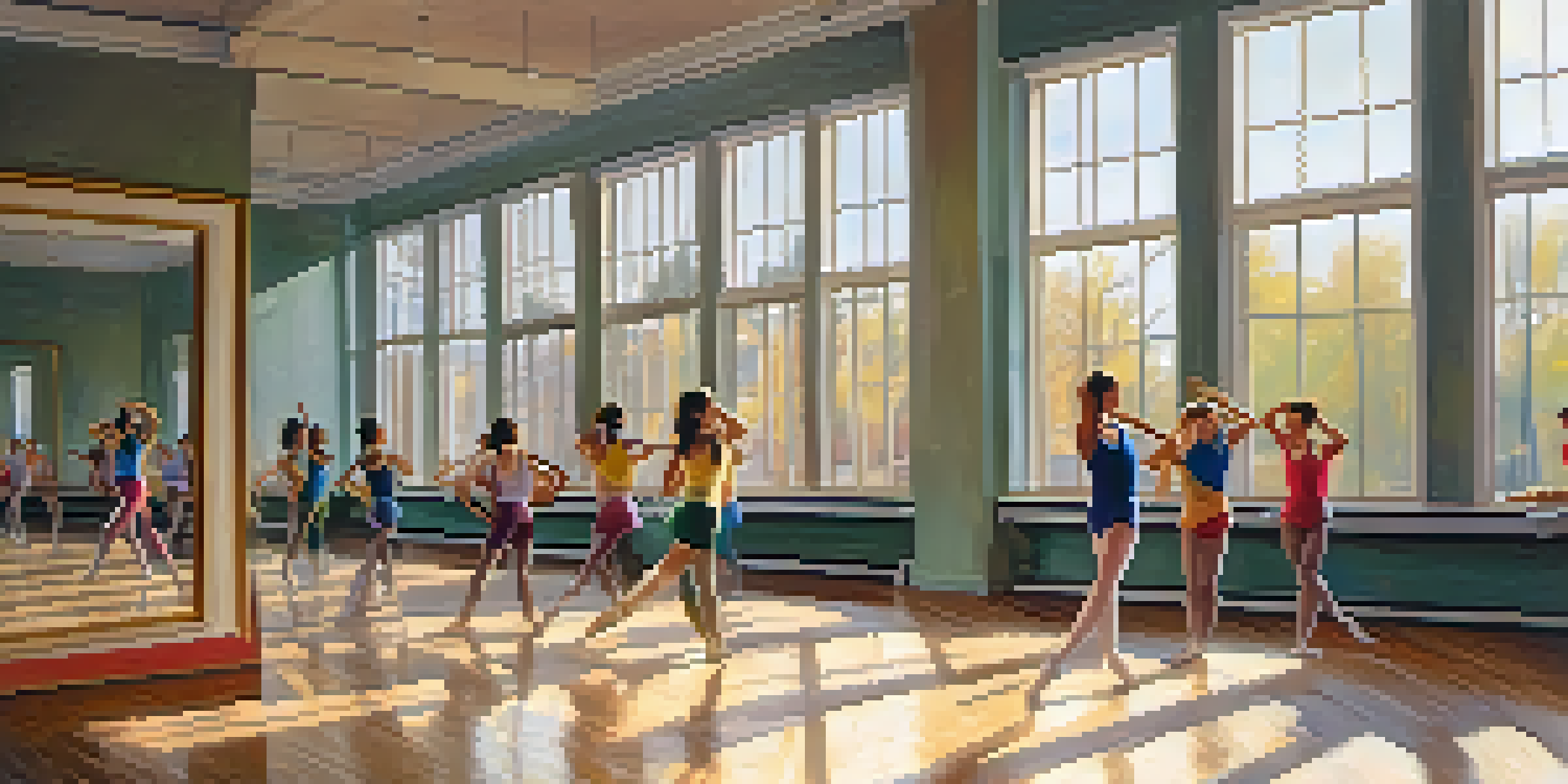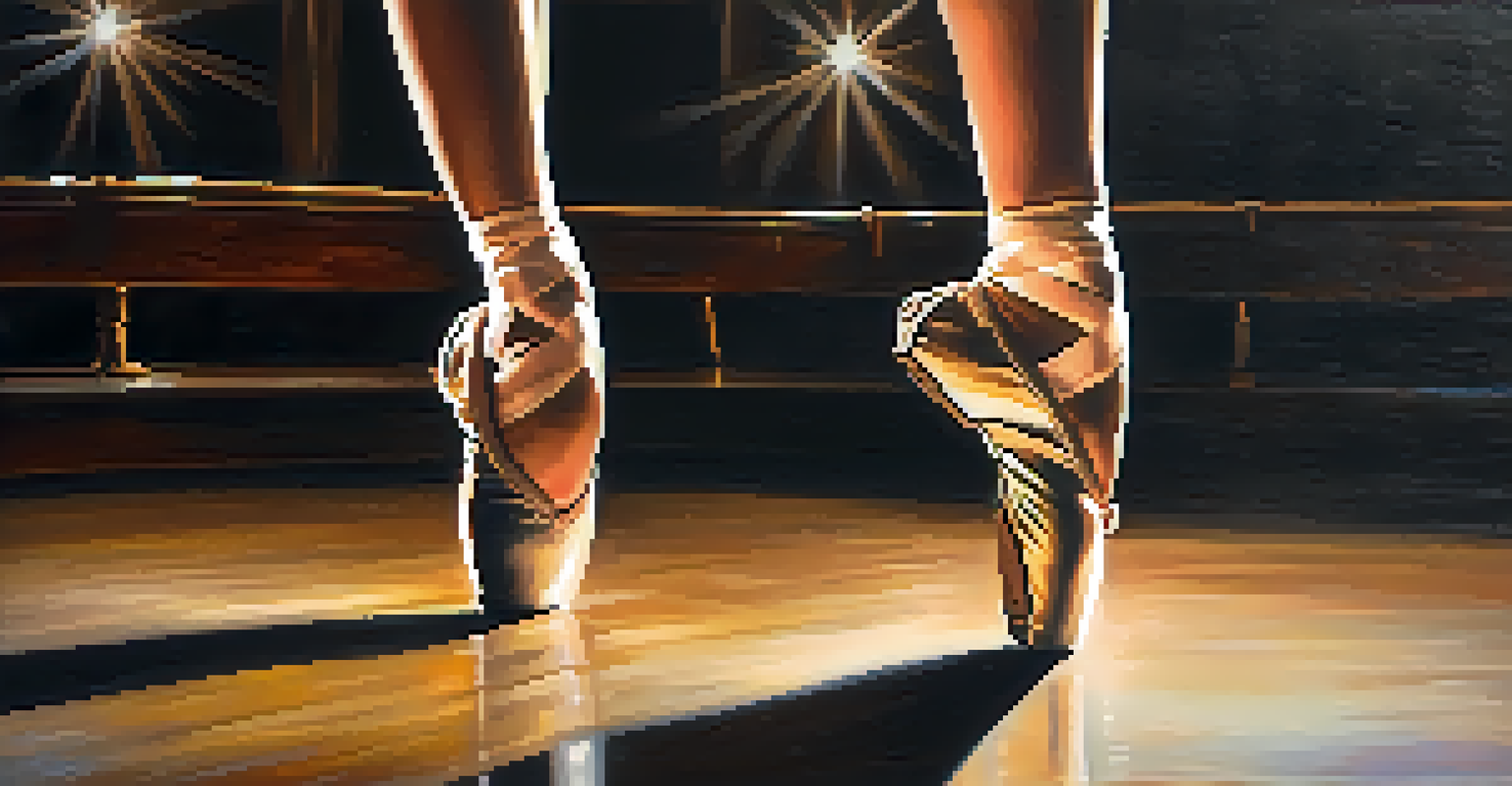Overcoming Pre-Performance Jitters: Tips for Dancers

Understanding Pre-Performance Jitters in Dance
Pre-performance jitters are a common experience for dancers of all levels. This feeling of anxiety can manifest as butterflies in your stomach, increased heart rate, or even a sense of dread. Recognizing that these jitters are completely normal can be the first step in overcoming them.
The only way to make sense out of change is to plunge into it, move with it, and join the dance.
Many dancers face similar feelings before a performance, creating a shared experience that fosters camaraderie. Whether you’re a seasoned performer or stepping on stage for the first time, understanding that you're not alone can be comforting. Remember, even the most experienced dancers have their moments of anxiety.
These jitters often stem from a desire to perform well and impress the audience. The pressure to succeed can amplify nerves, but reframing these feelings as excitement rather than fear can help shift your mindset. Embracing the thrill of performing can transform anxiety into a powerful source of energy.
Breathing Techniques to Calm Nerves
Deep breathing is one of the most effective ways to calm your nerves before a performance. By focusing on your breath, you can reduce anxiety and regain control over your body. Try inhaling deeply through your nose, holding for a few seconds, and exhaling slowly through your mouth.

Incorporating breathing exercises into your pre-performance routine can help establish a sense of calm. For instance, practicing box breathing—inhale for four counts, hold for four, exhale for four, and hold again for four—can ground you when nerves start to rise. This technique is not only simple but also incredibly effective.
Manage Pre-Performance Jitters
Recognizing pre-performance jitters as a normal experience can help dancers feel more at ease and connected with others.
Remember, it’s not just about the act of breathing, but also about being present in the moment. Focusing on your breath can draw your attention away from anxious thoughts and anchor you in the here and now. This mindfulness can significantly enhance your performance experience.
Visualization for Success
Visualization is a powerful mental technique that can help you prepare for your performance. By imagining yourself dancing flawlessly, you can build confidence and reduce anxiety. Picture every movement, every emotion, and the applause of the audience as if it’s happening in real time.
There are no mistakes, only opportunities.
Creating a vivid mental image of success can help reinforce positive feelings about your abilities. This practice can be done during your warm-up or even before you go to bed the night before a performance. The more detailed your visualization, the more effective it will be.
Many successful performers, not just dancers, use visualization as part of their preparation. It’s like a rehearsal for your mind, allowing you to experience victory before it happens. This technique can help transform pre-show jitters into excitement and anticipation.
Establishing a Pre-Performance Routine
Having a consistent pre-performance routine can provide a sense of stability and comfort. This routine can include everything from specific warm-up exercises to mental preparation techniques. Establishing these habits can help signal to your body and mind that it’s time to perform.
Consider incorporating elements that ground you, whether it’s listening to your favorite music, doing a few stretches, or even visualizing your success. These rituals can help create a familiar environment, making it easier to cope with nerves. It’s about finding what works best for you.
Utilize Breathing Techniques
Deep breathing exercises, like box breathing, can effectively calm nerves and anchor dancers in the present moment.
A well-defined routine not only helps calm your nerves but can also boost your confidence. When you know exactly what to expect leading up to your performance, you’re less likely to feel overwhelmed. Trust in your routine, and let it guide you to a successful performance.
Positive Self-Talk for Confidence
The way you talk to yourself can significantly impact your performance. Replacing negative thoughts with positive affirmations can help build your confidence. Instead of thinking, 'I might mess up,' try telling yourself, 'I am prepared and ready to shine.'
Practicing positive self-talk can help shift your mindset from fear to empowerment. Reminding yourself of past successes and acknowledging your hard work can reinforce a positive attitude. This simple adjustment can have a profound effect on your performance anxiety.
Consider writing down affirmations and repeating them before you step on stage. This practice can serve as a gentle reminder of your capabilities and strengths. With consistent positive self-talk, you can develop a resilient mindset that keeps jitters at bay.
Engaging in Light Physical Activity
Light physical activity can be an effective way to dispel nervous energy before a performance. Engaging in gentle stretches or a quick jog can help release tension and promote relaxation. Movement gets the blood flowing and can elevate your mood, making it easier to focus.
For some dancers, a short dance session with their favorite songs can also help shake off jitters. The key is to choose activities that keep you engaged without exhausting you. Finding that balance can prepare both your body and mind for the stage ahead.
Embrace Imperfection on Stage
Accepting that mistakes are part of performing allows dancers to focus on expression and enjoyment rather than striving for perfection.
Remember, the goal is to feel invigorated, not drained. This burst of activity can serve as a powerful reminder of why you love dancing in the first place. Embracing the joy of movement can help transform anxiety into excitement.
Embracing Imperfection on Stage
One of the most liberating realizations for dancers is that perfection is not the goal. Embracing the idea that mistakes are part of the performance can alleviate a lot of pressure. Remember, even the best dancers experience slip-ups, and it’s how you recover that truly matters.
Instead of striving for flawlessness, aim to connect with your audience and express your passion. Dance is an art form, and part of its beauty lies in its imperfections. Accepting this reality can shift your focus from fear to enjoyment.

This mindset can allow you to perform more freely and authentically. When you let go of the need to be perfect, you create space for creativity and spontaneity. Embracing who you are on stage can lead to a more fulfilling and enjoyable performance.